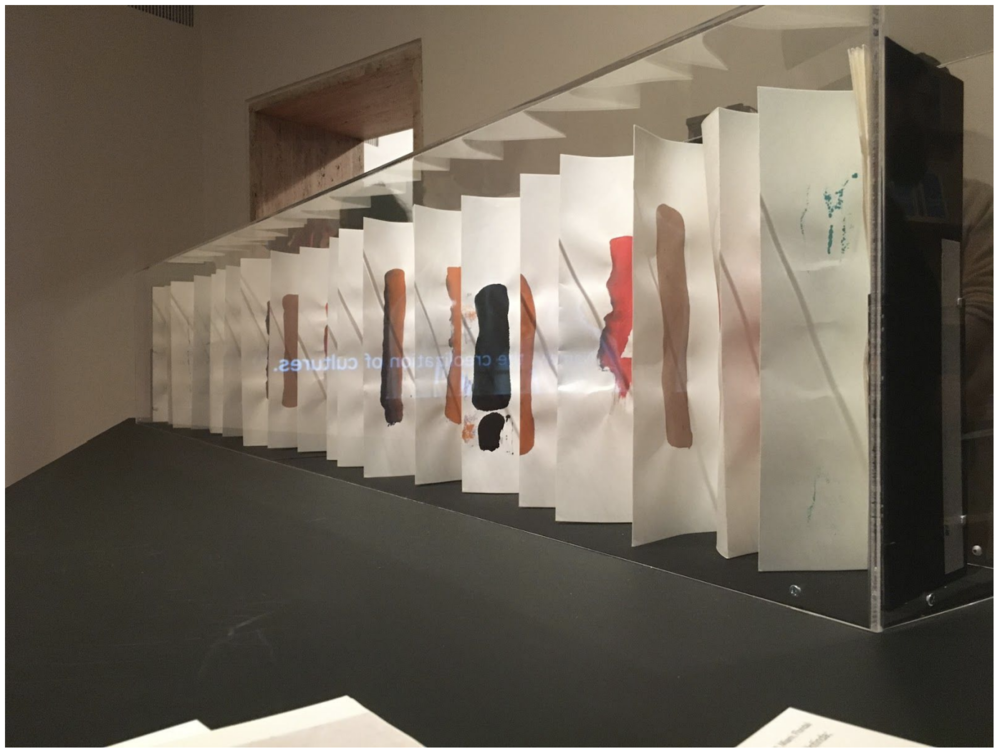Trembling Thinking
April 22, 2019
by CJ Stephens, Cohort ’17
Archipelagic thought has a tremble to it, a light sense of freedom that always carries with it something unknowable. However, this tremble is not from a division created by the unknowable but its movement of linking us together through it. A curatorial inspiration of this trembling thought appears in the exhibition, Lydia Cabrera and Édouard Glissant: Trembling Thinking, at the Americas Society (October 9, 2018-January 12, 2019), curated by Hans Ulrich Obrist, Gabriela Rangel, and Asad Raza. This group exhibition featured diversity on many levels including artworks, artists and mediums, and intertextualized the relationship of Cuban writer and ethnographer Lydia Cabrera and Martinique-born writer, poet and philosopher Édouard Glissant. Together, their considerations of identity, not just identity but reconsiderations of thought about identities, cause a trembling which travels far and extensively. Along with books and articles by Glissant and Cabrera, a film interview of Glissant, and Cabrera’s drawings, artwork from twenty-one different artists representing multi-layered, complex cultures, legacies, and traditions that intersect throughout the history of the Caribbean. Shown together, these works insight movement with each other’s identities. As a student and critic of Aimé Cesaire, Glissant formulated an alternative concept of Carribean identity, more fluid than Cesaire’s Pan-African, ‘Negritude’, called, ‘Creolisation.’ Glissant believes in a shift towards a “non-hierarchical and local situation in which the children of mixed marriages could construct their own identity.”
In Hommage a Edouard Glissant, (fig. 1) Etel Adnan’s work in book-form relates to the movement and rhythm of Archipelagic languages visually conjoining with Glissant. Leporellos, accordion -folded books often incorporate not only form but language. With her transcriptions of well known Arab poets, she has reformed the Middle Eastern calligraphic tradition. In this work, Adnan responds to Glissant’s ideas through islands of color that take the place of language. As Cabrera and Glissant were accustomed to speaking and thinking of language as a performative mode, they charged artists and poets with having true power to create and represent identities. The artis, Philippe Parreno offered an interactive piece titled, Call me, (fig.2). This piece invites the visitor to use their own phone to enact this work. The call conjures the voices of Cabrera, sourced from Orlando Jimenez Leal’s La Otra Cuba (The other Cuba), 1984, and Glissant, bringing into play the artist’s recurring theme of ghostly inhabitations.
In Study for Atopolis, (fig.3) Jack Whitten responds to Glissant’s relational concepts with a series of ink drawings. In an interview, the artist said, “I think in the arts, especially among black artists, we’re making it our business to rebuild a sense of place. To rebuild the culture”. With a sense of place and community, this work and the pieces in this exhibition carried with it the unknown language of trembling thinking.



